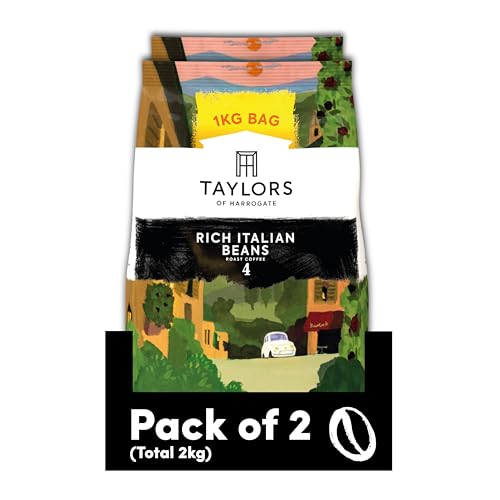Which Coffee Beans Are the Best?
When it comes to obtaining the perfect cup of coffee, the kind of beans you choose can make all the difference. Each type offers a unique flavor that complements a wide variety of beverages and recipes.

Panama leads the pack with their exclusive Geisha beans that score highly in cupping tests and are priced high at auction. However, Ethiopia particularly Yirgacheffe beans is close behind.
1. Geisha Beans from Panama
Geisha beans are among the finest coffee beans you can find all over the world. Geisha beans are prized for their distinctive aroma and flavor. These rare beans are grown at very high elevations and undergo a unique method of processing that gives them their distinctive flavor. The result is a cup that's rich, smooth, and full of flavor.
The Geisha coffee plant is native to Ethiopia It was first introduced to Panama in 1963. Geisha coffee has been proven to win contests due to its taste and prestige. Geisha beans are also costly due to the labor required to grow them. The Geisha coffee plant is more difficult to cultivate than other coffee plants because it requires higher elevations and unique climate conditions.
Geisha beans must also be handled with care, as they are delicate. They must be sorted carefully and carefully prepared for roasting. They could turn bitter or acidic if not properly prepared.
The Janson Coffee Farm is located in Volcan. The farm specializes in high-quality production and is dedicated to improving the environment. They utilize solar panels to provide energy, reuse water and waste material, and employ enzyme microbes to improve the soil. They also reforest the area and make use of recycled water to wash. Their coffee is Washed Geisha, which was awarded the highest score in the Panama Coffee Competition.
2. Ethiopian Coffee
Ethiopia is a coffee giant with a long track record of producing some of the most exquisite beverages. Ethiopia is the fifth largest coffee producer in the world. The beans are highly valued for their unique floral, fruity flavor profiles. In contrast to other beans, Ethiopians taste their best when they are roasted to a medium roast. This lets the delicate floral notes to stay while also accentuating their citrus and fruity flavors.
Sidamo beans, which are famous for their crisp acidity and crisp acidity, are among the top in the world. However, other varieties of coffee like Yirgacheffe or Harar, are also highly regarded. Harar is Ethiopia's most well-known and oldest variety. It has a distinctive mocha and wine taste. Coffees from the Guji region are also known for their complex flavors and a distinct Terroir.
Natural Process is a different type of Ethiopian coffee made by dry-processing, instead of wet processing. Wet-processing involves the washing of coffee beans which tends remove some of its sweetness and fruity flavors. Until recently, natural process coffees from Ethiopia were less popular than their washed counterparts, and they were mostly used to brighten up blends rather than being sold as a single-origin product on the specialty market. However, recent technological advances have made it possible to get more natural Ethiopians.
3. Brazilian Coffee
Brazilian Coffee is a rich blend of different types of beans. It is characterized by the low acidity and the smooth body. coffee beans delivery has a sweet taste with the scent of cocoa. The flavor is different based on the region and state it is grown. It is also renowned for its nutty and citrus notes. It is good for those who enjoy medium-bodied coffee.
Brazil is the world's largest exporter and producer of coffee. Brazil produces more than 30 percent of the world's total coffee beans. Brazil's economy is heavily reliant on this large agricultural industry. Brazil has a climate ideal for coffee cultivation, and there are fourteen major coffee-producing regions.
Catuai beans, Mundo Novo beans, Obata beans and Icatu are the main beans used in Brazilian coffee. All of these are varieties of Arabica. There are also a number of hybrids that contain Robusta. Robusta is a kind of coffee bean that originated in Sub-Saharan Africa. It's not as delicious and aromatic as Arabica, but it's easier to cultivate.
It is important to keep in mind that slavery is a problem in the coffee industry. Slaves in Brazil are often shackled to lengthy and exhausting work days and may not have adequate housing. The government has taken measures to address the issue by establishing programs to assist farmers with their debts.
4. Indonesian Coffee
The best Indonesian coffee beans are well-known for their earthy, dark taste. The volcanic ash mixed into the soil gives them a strong body and low acidity that makes them perfect for blending with high-acid coffees from Central America and East Africa. They also react well to roasts that are darker. Indonesian coffees are characterized by a complex and rustic taste profile and typically have notes of tobacco, leather wood, ripe fruits, and spice.
The biggest producers of coffee in Indonesia are located on Java and Sumatra, with some coming from Sulawesi, Bali, and Papua New Guinea. Many farms in this area use a wet-hulling procedure. This is different from the washed processing method that is common in most of the world, where the coffee cherries are pulverized and washed before drying. The hulling process decreases the amount of water in the coffee, which reduces the impact that rain has on the quality of the final product.
One of the most well-known and premium varieties of Indonesian coffee is Mandheling which is a product of the Toraja region. It is a rich and full-bodied coffee with hints of candied fruits and intense chocolate flavors. Gayo and Lintong are other types of coffee that originate from this region. These are typically wet-hulled and have a strong and smoky aroma.
